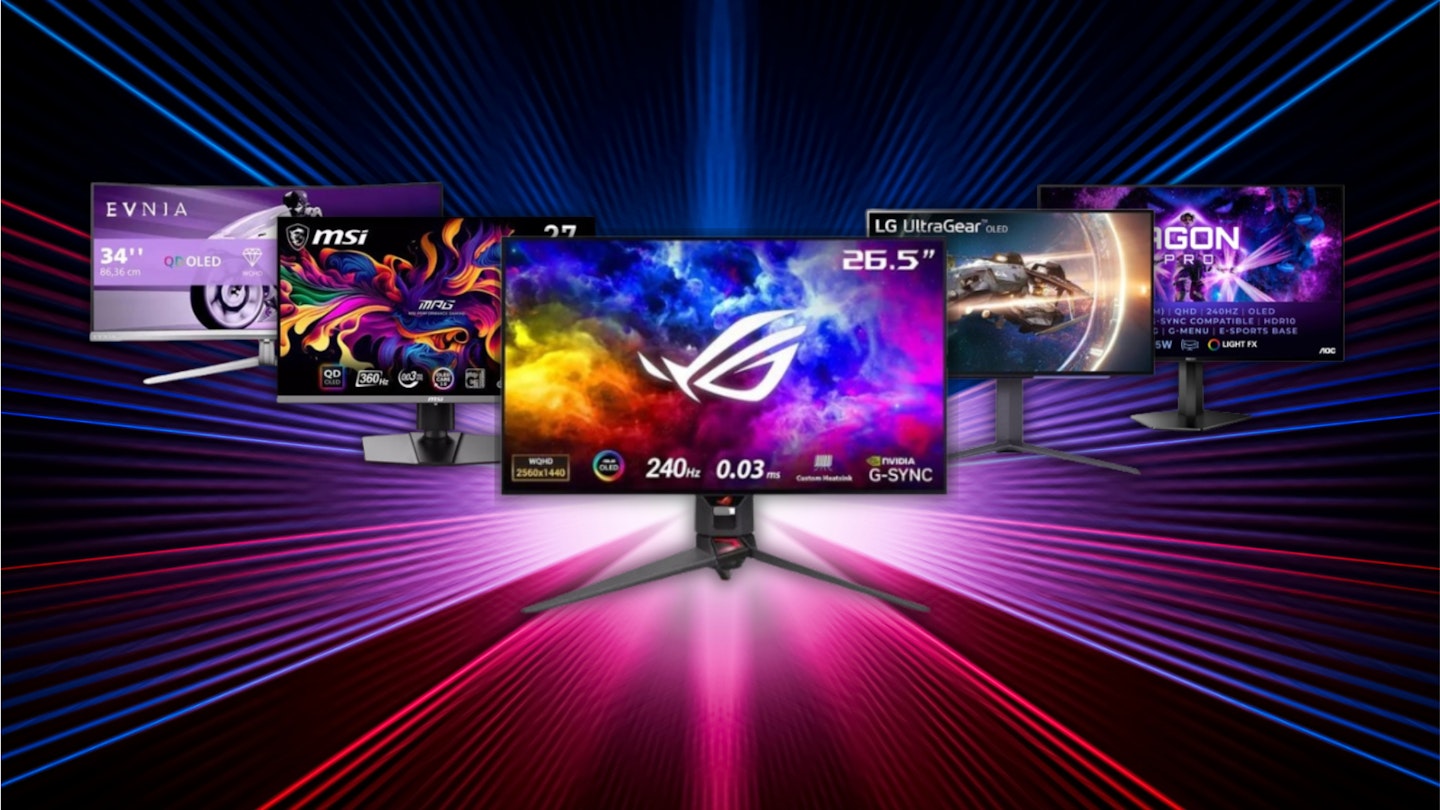The cutting-edge of screen technology is here: amongst the best monitors of the year, more and more we're seeing OLED monitors rising through the ranks. A technology more commonly seen amongst smart TVs, this rising star of the display world has taken a strong foothold amongst office workers, TV show binge-watchers and gaming enthusiasts, all thanks to its unparalleled performance and visuals.
Breathtakingly quick, with response times that are a mere fraction of a millisecond, the best OLED monitors of the year are better than ever before. Contrast, depth, colour, speed: qualities that PC and laptop users have been crying out for, for some time are reaching digital shelves in droves, but deciphering their specifications proves to be something of a nightmare.
The best OLED monitors of 2024 at a glance:
• Best overall: ASUS ROG Swift PG27AQDM - View on Currys
• Best budget: LG UltraGear 27GR95QE-B - View on eBuyer
• Best gaming: MSI MPG 271QRX - View on Currys
• Best 4K: MSI 32-inch MPG 321URX - View on Overclockers
These pricey monitors offer a vast range of technical features, from blindingly bright screens to smart capabilities, but what's the best for you?
We've taken the time to do our research, rooting out the ultimate OLED monitors for your viewing pleasure. Whether it's 4K or a great 1440p monitor you're in search of, there's something for everyone in this thorough roundup.
The best OLED monitors of 2024
All prices are correct at the time of writing. Prices, stock and deals are subject to change without notice.
Best overall OLED monitor
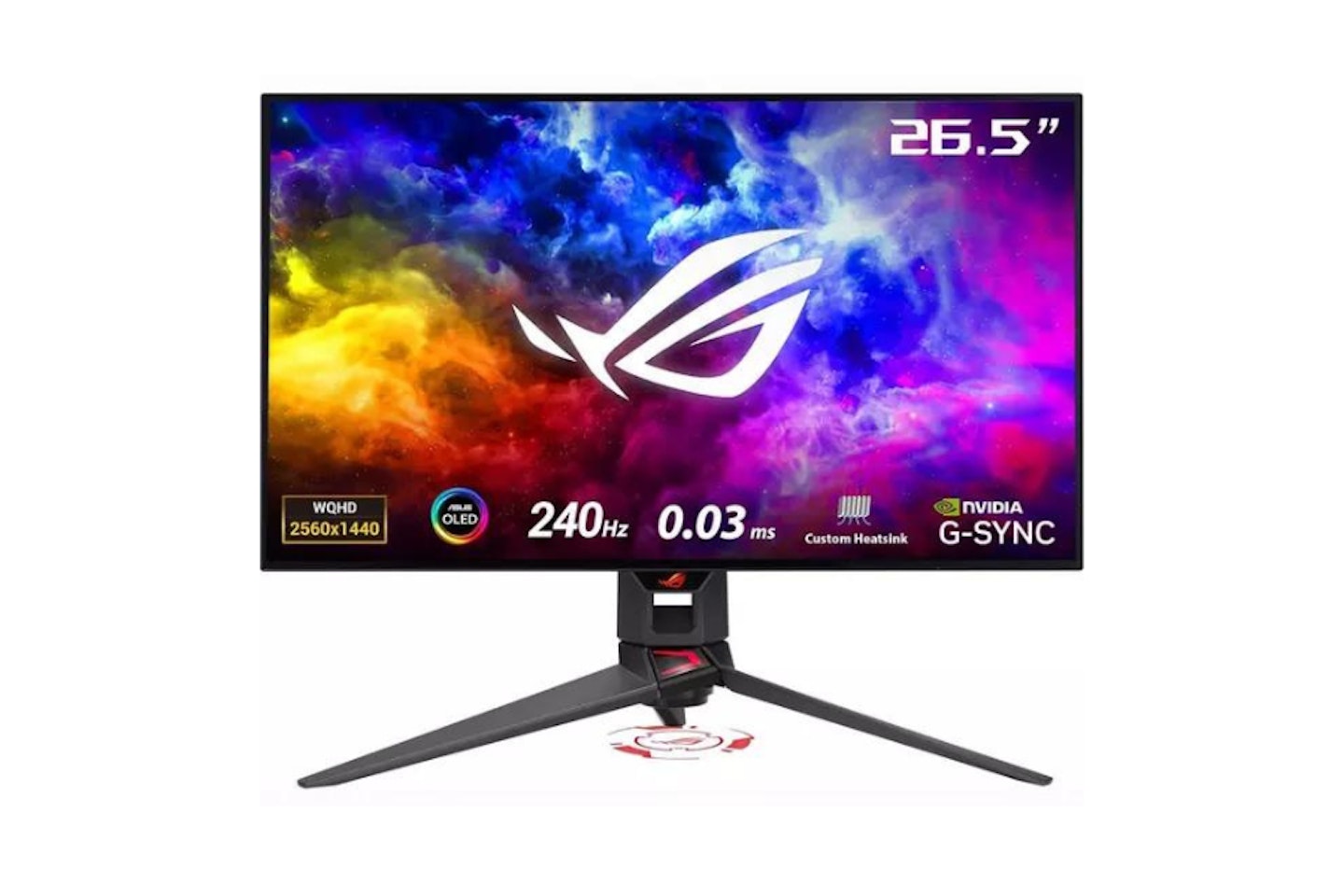 ASUS
ASUSwww.currys.co.uk
A truly brilliant next-generation monitor experience, the ASUS ROG Swift offers peak performance, brilliant aesthetics and gorgeous OLED technology, resulting in one of the most spectacular monitors of the year so far.
This quad-HD monitor doesn't pull its punches in terms of visuals: its OLED panel technology draws the eye thanks to its phenomenal contrast, with shadows and dark scenes appearing almost life-like thanks to an infinite contrast ratio.
The screen of the ASUS ROG Swift PG27AQDM itself is ultra-thin as OLED monitors commonly are, and the overall look is mindblowing. Adopting a futuristic, yet not overbearing design, this OLED monitor lives up to its price tag where aesthetics are concerned.
As for drawbacks, whilst the PG27AQDM OLED monitor is visually excellent, it isn't 4K, instead opting for a speedier quad-HD resolution. For gamers, this ensures that an unbelievable refresh rate can be reached without the taxing demand of ultra-HD, so you're getting some truly unbeatable speed. But for those who wish to experience their favourite games at 4K, whilst also having similar speeds, you're looking at a lot of cash.
For its price, however, the ASUS ROG Swift PG27AQDM is one of the best 27-inch monitors on the market, with performance and visuals that are practically unrivalled on the monitor market.
Pros
- Brilliant high-contrast OLED monitor
- Incredibly quick response time
- Fantastically designed for versatility
Cons
- Only 1440p resolution
| Resolution: | Quad HD 2560 x 1440p |
| Screen size: | 26.5 inches |
| Refresh rate: | 240 Hz |
| Response time: | 0.03 ms |
| HDR: | HDR10 |
| Ports: | HDMI 2.0 x 1, DisplayPort 1.4 x 1, USB x 3 |
| Colour support: | P3: 99 per cent |
| Brightness: | 1,000 nits |
| Viewing angle: | 178 degrees |
Best budget OLED monitor
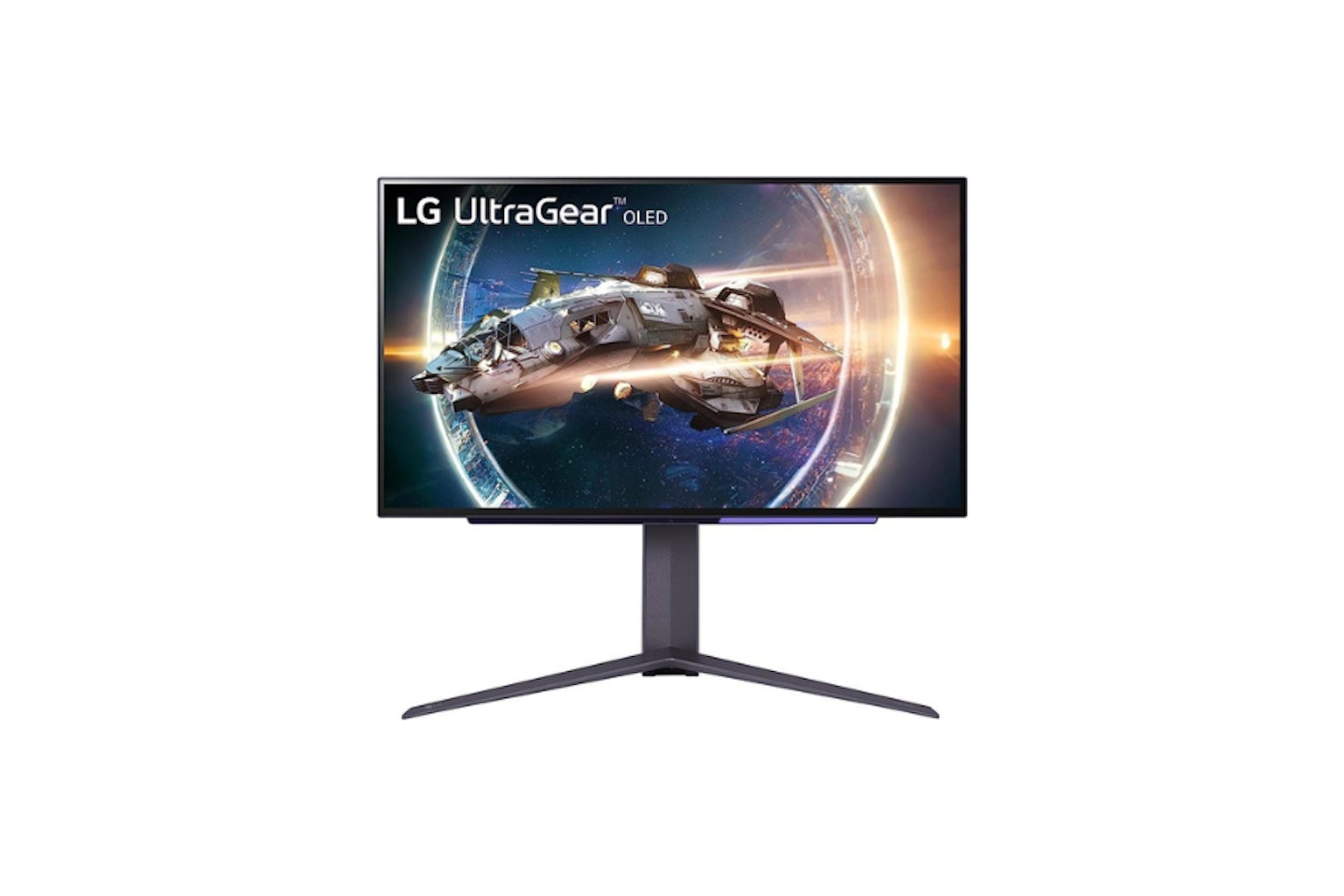 LG
LGwww.ebuyer.com
Certainly one of the more affordable OLED monitors available this year, the LG UltraGear remains as one of the best-performing OLED monitors, with incredible 0.03 ms response times, a 240Hz refresh rate, all with a phenomenal brightness of 1,000 nits.
Vibrant and eye-catching, despite the slightly weaker colour gamut of the 27GR95QE monitor, its visuals are simply excellent. Paired with HDR10, OLED contrast is incredibly enticing, and for half the cost of higher-end models elsewhere, it's a solid price.
Compared to other non-OLED monitors, however, the UltraGear remains particularly expensive, and with a price that's more than most PC rigs, you're paying a lot for performance.
If you're dead set on a proper OLED monitor, however, the LG UltraGear 27GR95QE is an exceptionally brilliant choice for anyone, but especially gamers.
Pros
- Excellent visuals and performance
- Comfortable to use with a versatile stand
- More affordable than other options on the market
Cons
- Cheaper 4K monitors available without OLED
| Resolution: | 2K 2560 x 1440p |
| Screen size: | 27-inch |
| Refresh rate: | 240 Hz |
| Response time: | 0.03 ms |
| HDR: | HDR10 |
| Ports: | HDMI 2.1 x 2, DisplayPort 1.4 x 1, USB 3.0 x 3 |
| Colour support: | DCI-P3: 90 per cent |
| Brightness: | 1,000 nits |
| Viewing angle: | 178 degrees |
Best gaming OLED monitor
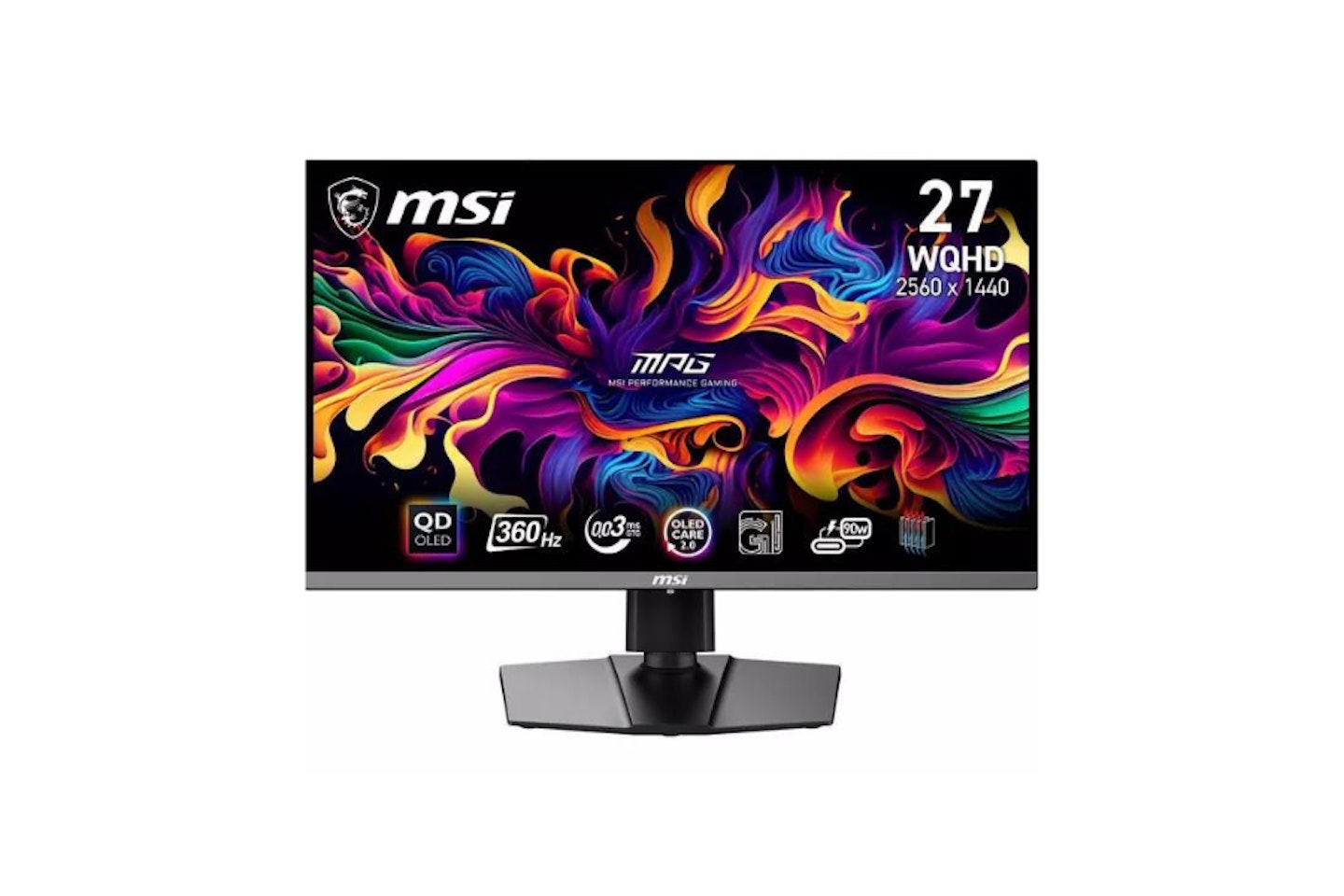 MSI
MSIwww.currys.co.uk
When it comes to gaming peripherals, MSI rarely skips a beat: the MSI 271QRX QD-OLED is a terrific gaming monitor for the best OLED performance possible. Brilliantly optimised for top-tier performance, this 360 Hz monitor offers perhaps the smoothest experience possible for PC gamers. With sharp precision paired with gorgeous QD-OLED visuals, the 271QRX monitor feels effortless to use, and with a vast range of FPS games on the horizon this year, it's undoubtedly worth the price.
Quad HD might not offer the same experience as a true OLED monitor, but its visuals are doubtlessly brilliant nonetheless. Plus, it's an easy trade to make when it comes to performance, especially if you're a highly competitive gamer.
As for its setbacks, the MSI 271QRX monitor has relatively limited brightness for its price: at 250 nits, the screen can look a little dim in certain lights, especially when compared to other monitors on the market. This lower brightness, however, helps to create deeper shadows and darker colours, making the inky darkness of night feel truly dark, so it's a great choice for those looking for a horror game to sink their teeth into.
An all-around brilliant gaming OLED monitor, the MSI MPG 271QRX might be pricey, but it's in a league of its own for smoothness, it's a monitor with a well-earned spot on this list.
Pros
- Unrivalled 360Hz refresh rate
- Brilliant contrast for gorgeous visuals
- Great connectivity for multiple devices
Cons
- Fairly low brightness for high-end model
| Resolution: | Quad HD 2560 x 1440p |
| Screen size: | 27-inch |
| Refresh rate: | 360Hz |
| Response time: | 0.03 ms |
| HDR: | DisplayHDR True Black 400 |
| Ports: | HDMI 2.1 x 2, DisplayPort 1.4a x 1, USB Type-C x 1, USB 2.0 x 2, USB Type-B x 1 |
| Colour support: | DCI-P3: 99 per cent |
| Brightness: | 250 nits |
| Viewing angle: | 178 degrees |
Best 4K OLED monitor
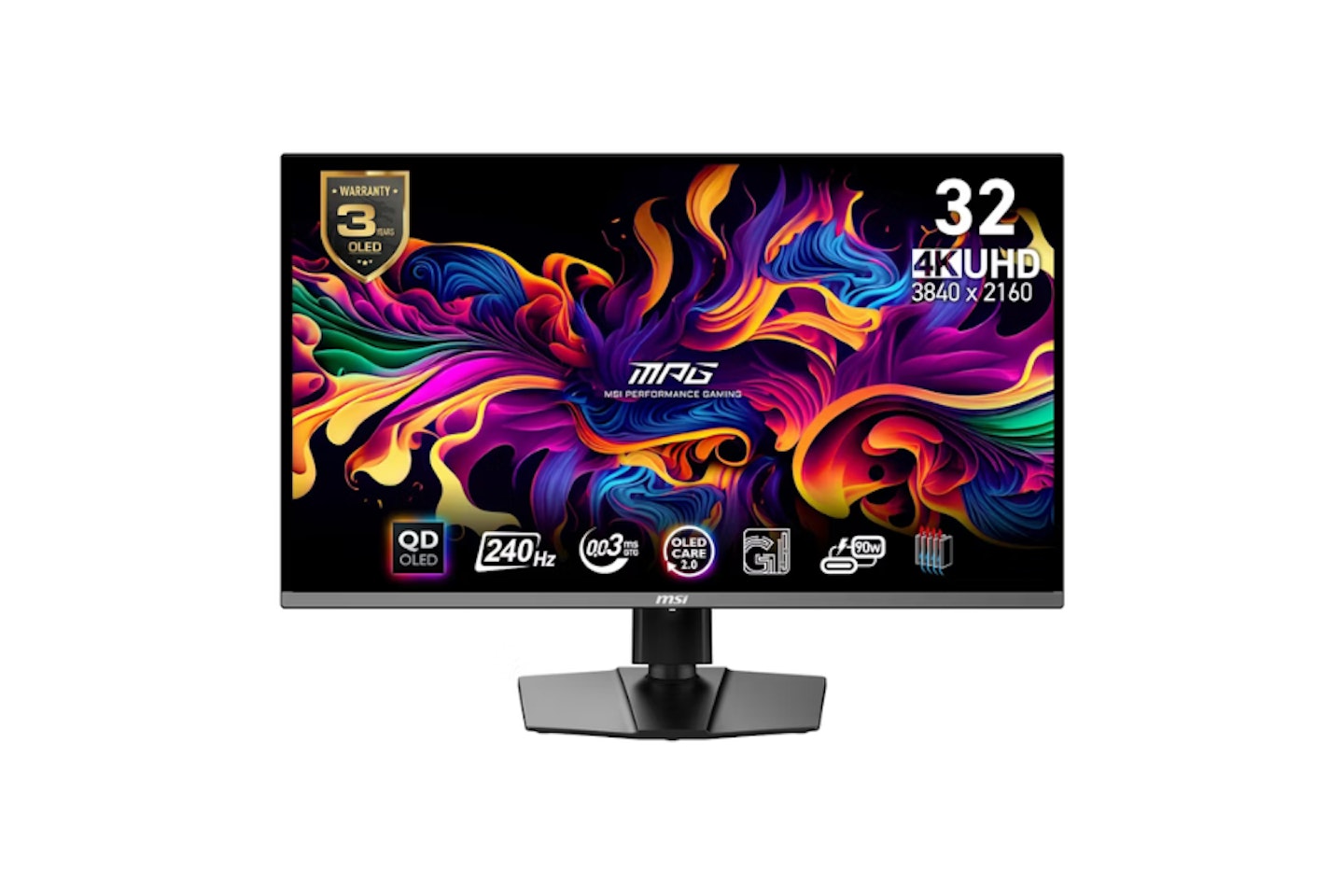 MSI
MSIwww.overclockers.co.uk
A brand-new monitor from MSI, the MPG 321URX is perhaps the most cutting-edge 32-inch monitor on the market, encompassing the best technology from across the market, this monitor is a true rarity and is bound to sell quickly.
A great-sized 32-inch monitor, there's nothing quite like experiencing truly next-level 4K visuals paired with QD-OLED technology. The brightness and colour of Quantum Dot technology paired with the depth and contrast of OLED pair together beautifully, creating a second-to-none visual experience that is unparalleled.
This cutting-edge monitor is easily one of the most expensive monitors available this year, in no small part thanks to its array of brilliant technology, the 321URX is pricey, there's no denying it.
But for the best OLED monitor experience, you'll have to pay a high price, and it goes without saying that high-end monitors are expensive. This terrific monitor has stunning 0.03ms response times, a 240Hz refresh rate and arguably the best visuals around, if you can afford the MSI MPG 321URX monitor - you should undoubtedly go for it.
Pros
- Stunning QD-OLED screen
- Great 32-inch size
- Phenomenal performance
Cons
- Incredibly expensive compared to other OLED monitors with similar specifications
| Resolution: | Ultra-HD 3840 x 2160p |
| Screen size: | 32-inch |
| Refresh rate: | 240Hz |
| Response time: | 0.03ms |
| HDR: | HDR400 |
| Ports: | HDMI 2.1 x 2, DisplayPort 1.4a x 2, USB C x 1, USB 2.0 x 2 |
| Colour support: | DCI-P3: 99 per cent |
| Brightness: | 250 nits |
| Viewing angle: | 178 degrees |
Best ultrawide OLED monitor
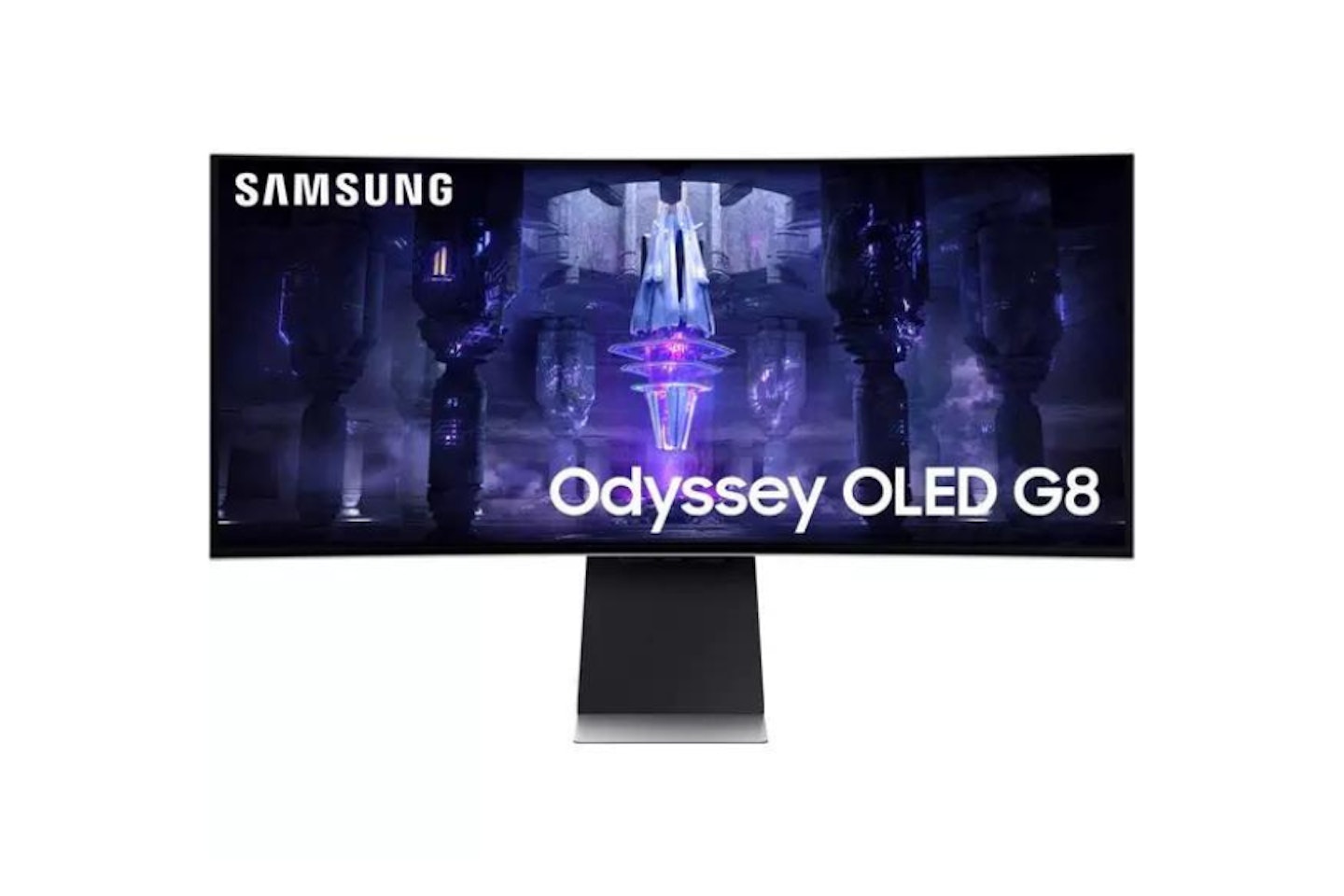 Samsung
Samsungwww.currys.co.uk
For those looking to revolutionise their setup for absolute immersion, the Samsung Odyssey G8 is without question one of the best monitors on the market for such a purpose. A colossal 34-inch ultrawide quad-HD monitor delivers stunning picture quality on an enveloping screen. Curved screens, while something of an oddity, have some genuine benefits to eye health, giving you a much more comfortable viewing experience than a typical flat screen might.
Visually, Samsung knocks it out of the park with the G8: relaxing to your favourite Netflix show, gaming and even video editing are full of so much detail, it's almost lifelike. This impressively sharp monitor is made even more so thanks to its 175 Hz refresh rate, which is sharp, quick and precise to use, especially whilst gaming.
Whilst Samsung has marketed the G8 as a '4K' quad HD monitor, it cannot really be both. In fact, it isn't truly 4K, but rather an ultrawide quad HD monitor, which offers terrific visuals, but to the same extent as an ultra-HD monitor.
Samsung's Odyssey G8 is a brilliant ultrawide curved monitor with a mesmerising design, breathtaking visuals and incredible performance - it's an expensive option, to be sure, but a worthwhile one.
Pros
- Strong OLED visuals
- Excellent performance with a high refresh rate
- Ultrawide design is incredibly immersive
Cons
- An ultrawide curved screen might not be suitable for everyone
| Resolution: | Ultrawide quad HD 3440 x 1440p |
| Screen size: | 34-inch |
| Refresh rate: | 175 Hz |
| Response time: | 0.1 ms |
| HDR: | HDR400 |
| Ports: | HDMI 2.1 x 1, Mini DisplayPort 1.4 x 1, USB Type-C x 2 |
| Colour support: | DCI-P3: 99 per cent |
| Brightness: | 250 nits |
| Viewing angle: | 178 |
Best large OLED monitor
 Gigabyte
GigabyteFor those on the lookout for plenty of screen space, the Gigabyte AORUS FO48U might well be the answer. This enormous OLED monitor stands at a whopping 48 inches, which is larger than most televisions on the market. Perfect for a gaming setup, but also for those desperate for brilliant multi-tasking, this enormous monitor is perfect for plenty of tasks, work or otherwise.
In particular, it's a fantastic monitor for settling down in the evening to Netflix or other streaming apps, considering its massive size. Paired with its stunning 4K visuals and ultra-quick response times, this monitor is one of the best on the market at its price. Despite its television-like design, however, the AORUS FO48U doesn't have smart capabilities, unlike some of the smaller monitors on the market.
For some, this 48-inch monitor is certainly excessive in its size: for most desks, it's simply too big to use, which is bound to discourage some from buying. At its price, however, you're incredibly unlikely to find a more affordable 4K monitor with a 120Hz refresh rate.
Where performance, design and visuals are concerned, the AORUS FO48U is a spectacular monitor and is well worth its price at less than £1,000. Gamers, daring office workers and cinema enthusiasts, it's an OLED monitor you shouldn't pass up on.
Pros
- Excellent 4K resolution
- OLED quality looks fantastic
- Beautifully designed with a spectacular 48-inch screen
Cons
- Particularly large, not appropriate for regular desks
| Resolution: | Ultra-HD 3840 x 2160p |
| Screen size: | 48-inch |
| Refresh rate: | 120 Hz |
| Response time: | 1 ms |
| HDR: | Not specified |
| Ports: | HDMI 2.1 x 2, DisplayPort 1.4 x 1, USB Type-C x 1, USB 3.0 x 3, USB 3.0 x 3 |
| Colour support: | DCI-P3: 98 per cent |
| Brightness: | 900 nits |
| Viewing angle: | 178 degrees |
Best OLED monitor under £800
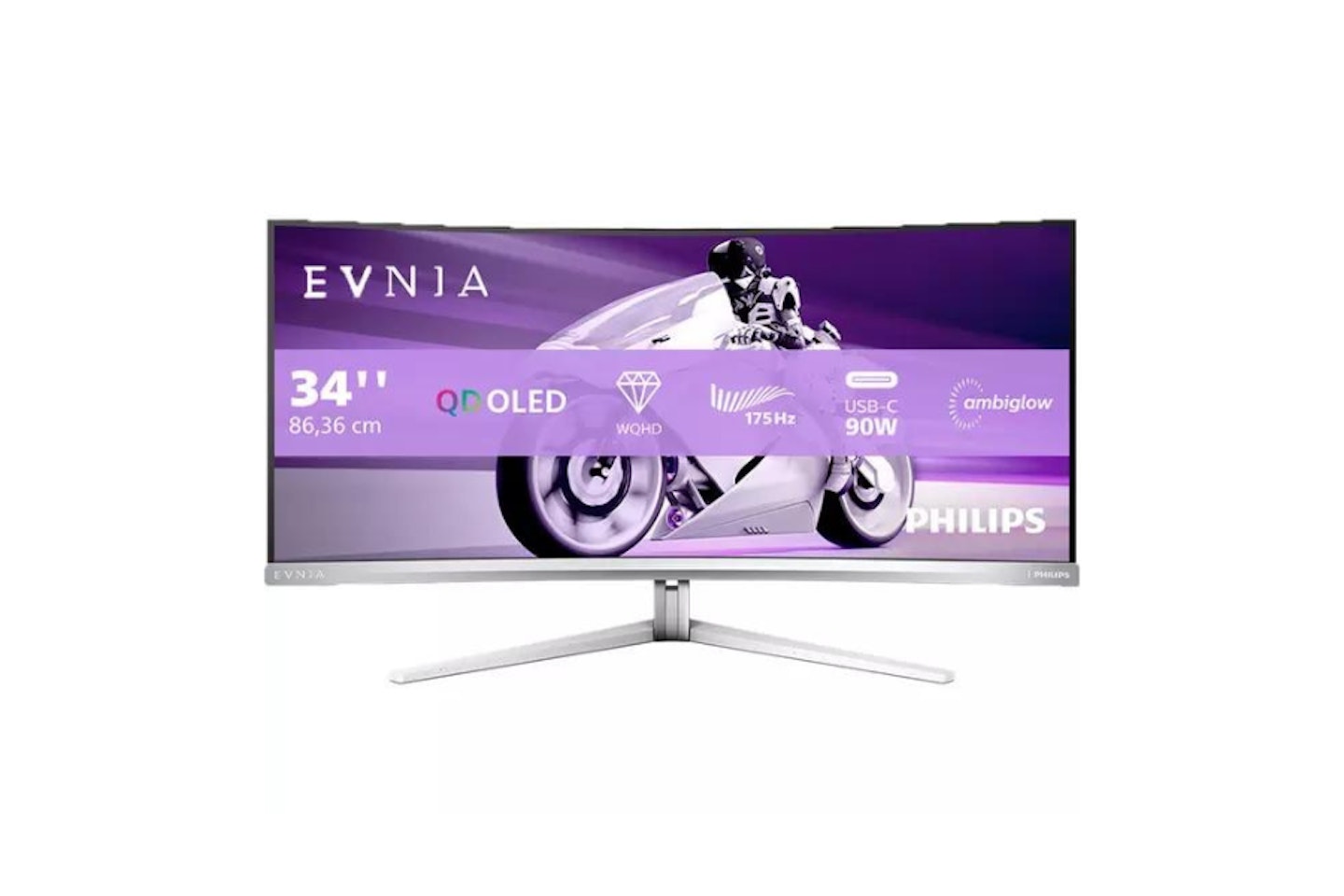 Philips
Philipswww.currys.co.uk
A brilliant feature-filled curved monitor, the Philips Evnia 34-inch curved monitor is a stunning breath of fresh air in the monitor market: a gorgeous ultra-thin bezel design, silver stand and slick aesthetics combined with the gorgeous QD OLED screen are simply sublime.
Deep, rich colours, and response times that are a fraction of a millisecond, the Philips Evnia is a pricey monitor, but it's undoubtedly a worthwhile investment. For office workers or home project tinkerers, the Philips Evnia ultrawide screen is marvellous for absolute multitasking control. It's a massive screen, there's no denying it: you'll need a larger desk to fit your laptop and peripherals on along with it.
As for its resolution, though it may have a fantastic colour range, its lower quad HD resolution detracts slightly from the Evnia 34M2C8600's visual experience, but it still looks fantastic. Right now, OLED monitors typically are Quad HD, with a few monitors in between being capable of 4K and OLED - it's only a matter of time before we see more affordable 4K monitors with OLED capabilities reach the market.
The Philips Evnia 34M2C8600 is the perfect curved gaming monitor, and one of the most excellent monitors for multitasking of the year right now, and at its competitive price, it shouldn't be ignored.
Pros
- Fantastic refresh rate and performance
- Beautiful curved aesthetic
- Well-designed monitor for fantastic adjustment
Cons
- Only quad HD despite price
| Resolution: | Wide Quad HD 3440 x 1440p |
| Screen size: | 34-inch |
| Refresh rate: | 175 Hz |
| Response time: | 0.3 ms |
| HDR: | HDR400 |
| Ports: | HDMI 2.0 x 2, USB Type-C x 1, DisplayPort 1.4 x 1 |
| Colour support: | DCI-P3: 99.3 per cent |
| Brightness: | 450 nits |
| Viewing angle: | 178 degrees |
Best high refresh rate OLED monitor
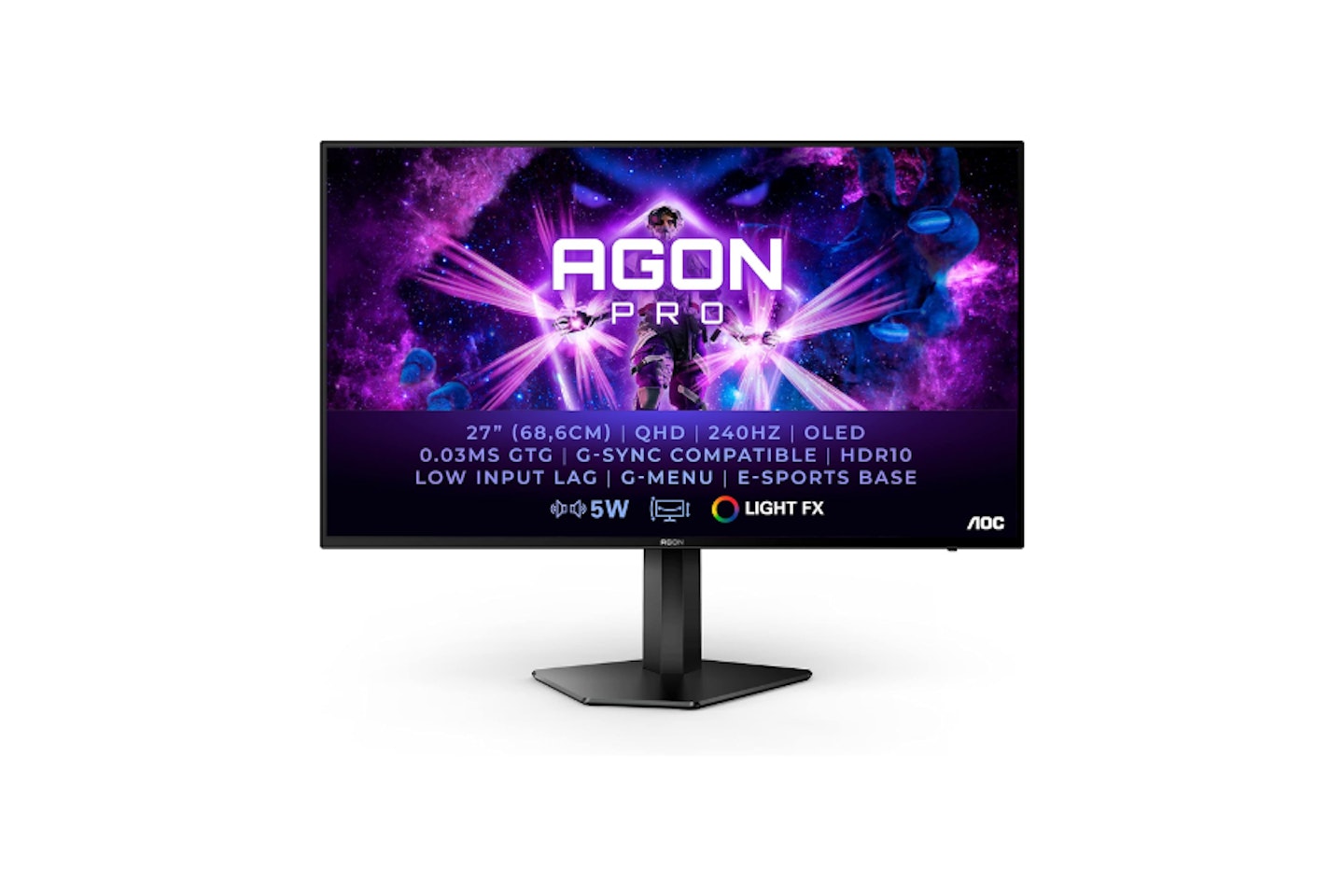 AOC
AOCAOC's AGON PRO 27-inch OLED monitor is designed for powerful, versatile performance, and is one of the best for E-Sports gaming or video editors in search of a monitor capable of editing at high refresh rates.
Whether you're a programmer working on simulation software, or you're just looking for the best visuals and the smoothest performance, the AOC AGON Pro is a powerful OLED monitor that excels in performance and has a design that allows for plenty of desk versatility.
Though the AGON Pro adopts something of a gamer aesthetic thanks to its built-in lighting effects that aren't appropriate for office environments, it's a quality that some are likely to enjoy. Its design is eye-catching and is designed with plenty of daily functionality. The ability to rotate the screen makes the AGON Pro perfect monitor for a dual-screen setup, and the ability to adjust its height is a features that's tough to go without once you've experienced it.
The AGON PRO is a fantastic high refresh rate monitor that oozes style, offers second-to-none performance and has strong quad HD visuals that are only enhanced with the power of OLED. And for less than £1,000, it's one of the cheaper options of the year.
Pros
- Great quad HD visuals paired with OLED
- Strong 240Hz performance is ideal for gaming
- Includes light FX for ambient aesthetics
Cons
- Gaming lighting aesthetic isn't for everyone
| Resolution: | Quad HD 2560 x 1440p |
| Screen size: | 27-inch |
| Refresh rate: | 240Hz |
| Response time: | 0.03ms |
| HDR: | HDR10 |
| Ports: | HDMI 2.0 x 2, DisplayPort 1.4 x 2, USB 3.2 x 2 |
| Colour support: | DCI-P3: 99 per cent |
| Brightness: | 1,000 nits |
| Viewing angle: | 178 degrees |
Best high-end OLED monitor
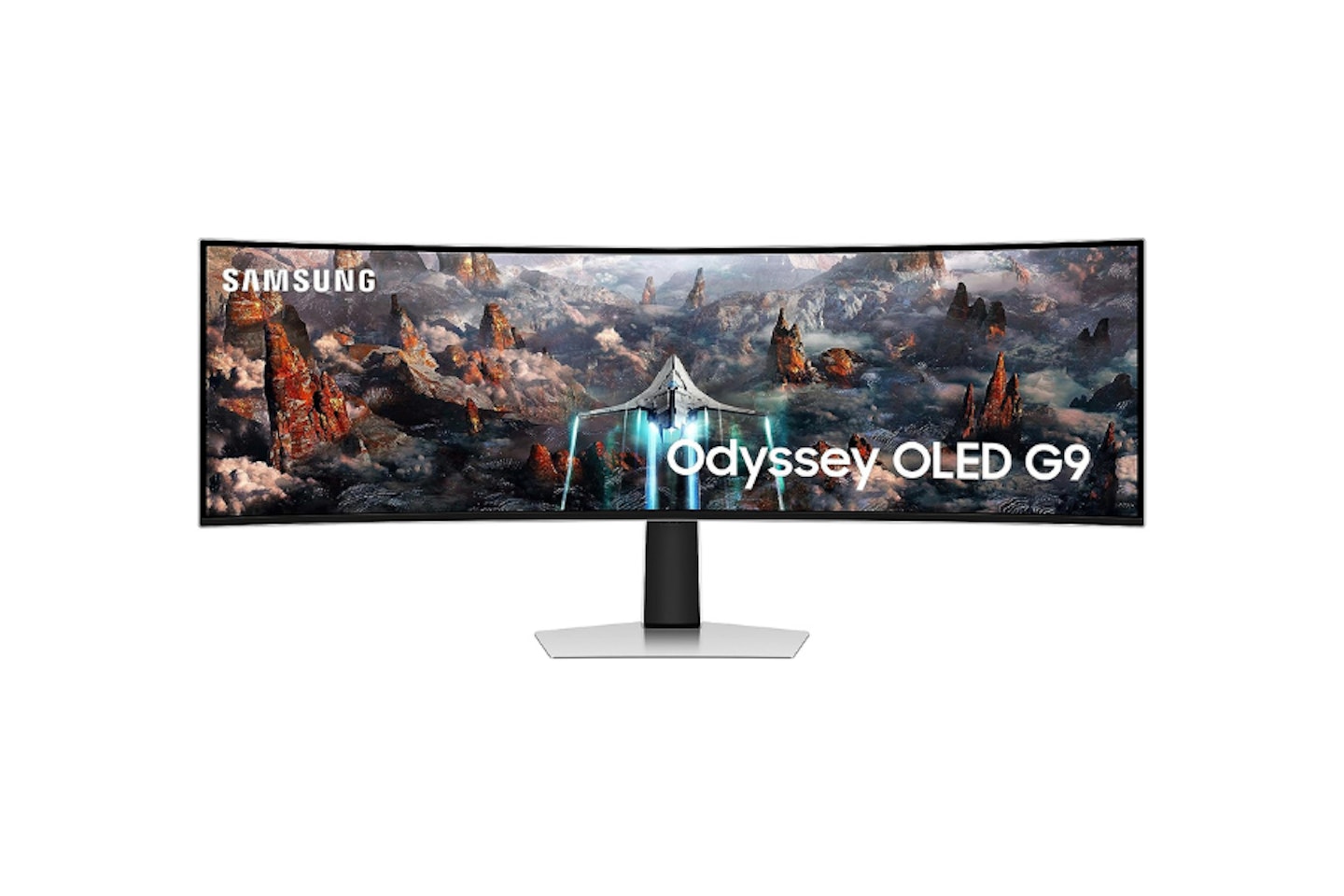 Samsung
SamsungIf multiple monitors aren't your cup of tea, this gigantic 49-inch ultrawide OLED monitor from Samsung might just be the perfect solution for you. Gorgeously slick and well-designed, the Odyssey OLED G9 smart monitor is in a league of its own when it comes to performance and visuals.
Absolute immersion is difficult to achieve with a completely flat screen: which is why the G9 is so highly recommended. Gamers, evening television binge-watchers and hobbyists alike can experience the total depth and clarity of the G9's OLED resolution, with unparalleled colour reproduction for a tear-inducingly beautiful visual feast.
For those looking to connect multiple devices on the G9, however, prepare to be slightly disappointed: the G9 has a single HDMI port and a DisplayPort in terms of connectivity, which is disappointing considering this monitor's smart platform capabilities.
Nonetheless, for something truly special to delve into your favourite games or films, the Samsung Odyssey G9 is a truly fantastic choice for anyone with pockets deep enough.
Pros
- Enormous 49-inch screen
- Stunning DQHD resolution
- Great OLED colour and performance
Cons
- A limited number of ports
| Resolution: | DQHD 5120 x 1440p |
| Screen size: | 49 inches |
| Refresh rate: | 240 Hz |
| Response time: | 0..03ms |
| HDR: | HDR10+ |
| Ports: | HDMI 2.1 x 1, DisplayPort 1.4 x 1, Micro HDMI x1 |
| Colour support: | DCI-P3: 99 per cent |
| Brightness: | 250 nits |
| Viewing angle: | 178 degrees |
Best OLED monitor for office work
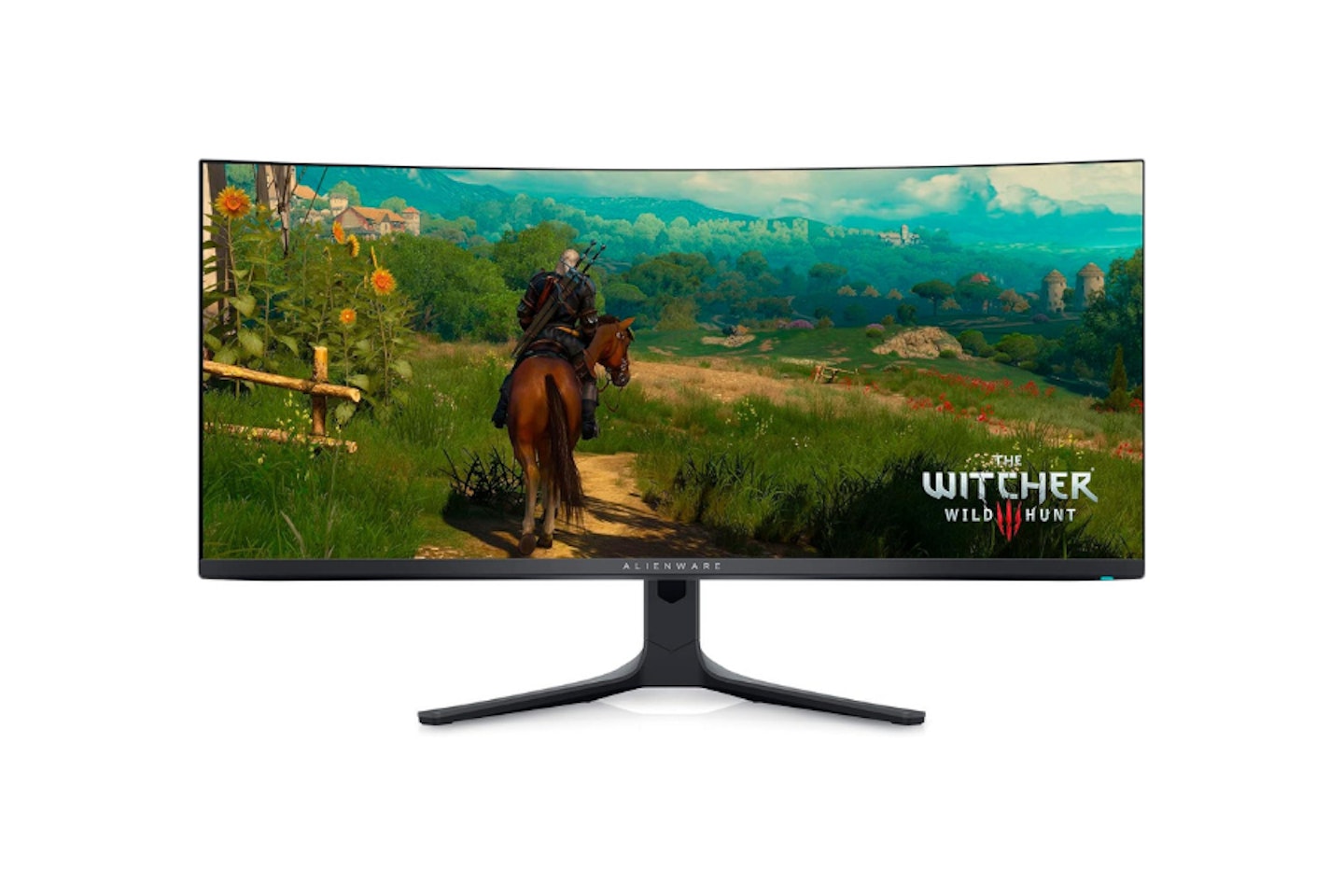 Alienware
AlienwareIf you're an office worker passionate about cutting-edge visuals, eye comfort and sublime colours, the Alienware AW3423DWF might just be for you. A mighty monitor with a swift 165Hz refresh rate, 0.1ms response times and an eye-catching curved screen, this Alienware monitor is perfect for accurate colour reproduction and is only heightened by its sheer viewing comfort.
If you're desk-bound for most of the day, looking at a dull, sluggish monitor for countless hours per day will only cause you a headache. Instead, opting for a high-end monitor such as the AW3423DWF is a great way to boost productivity. Plus, its wide 34-inch design is a must for multitasking, giving data-driven workers and typists alike a vast amount of room to utilise.
If there's anything that detracts from the Alienware AW3423DWF monitor, it's the lack of flexibility that the monitor offers. At its price, swivel functions would drastically improve the usability of the monitor in a dual monitor setup, but as it stands, the height adjustment serves well enough.
The Alienware AW3423DWF monitor is a wonderful 0.1ms monitor worth grabbing, especially if you're looking for a great monitor for working from home.
Pros
- Great visuals with gorgeous colours
- Incredible screen brightness
- Well-designed with a solid stand
Cons
- Limited movement from stand
| Resolution: | WQHD 3440 x 1440p |
| Screen size: | 34-inch |
| Refresh rate: | 165 Hz |
| Response time: | 0.1 ms |
| HDR: | HDR400 |
| Ports: | HDMI x 1, DisplayPort x 2, USB x 5 |
| Colour support: | DCI-P3: 99.3 per cent |
| Brightness: | 1,000 nits |
| Viewing angle: | 178 degrees |
The best OLED monitors of 2024: buyer's guide
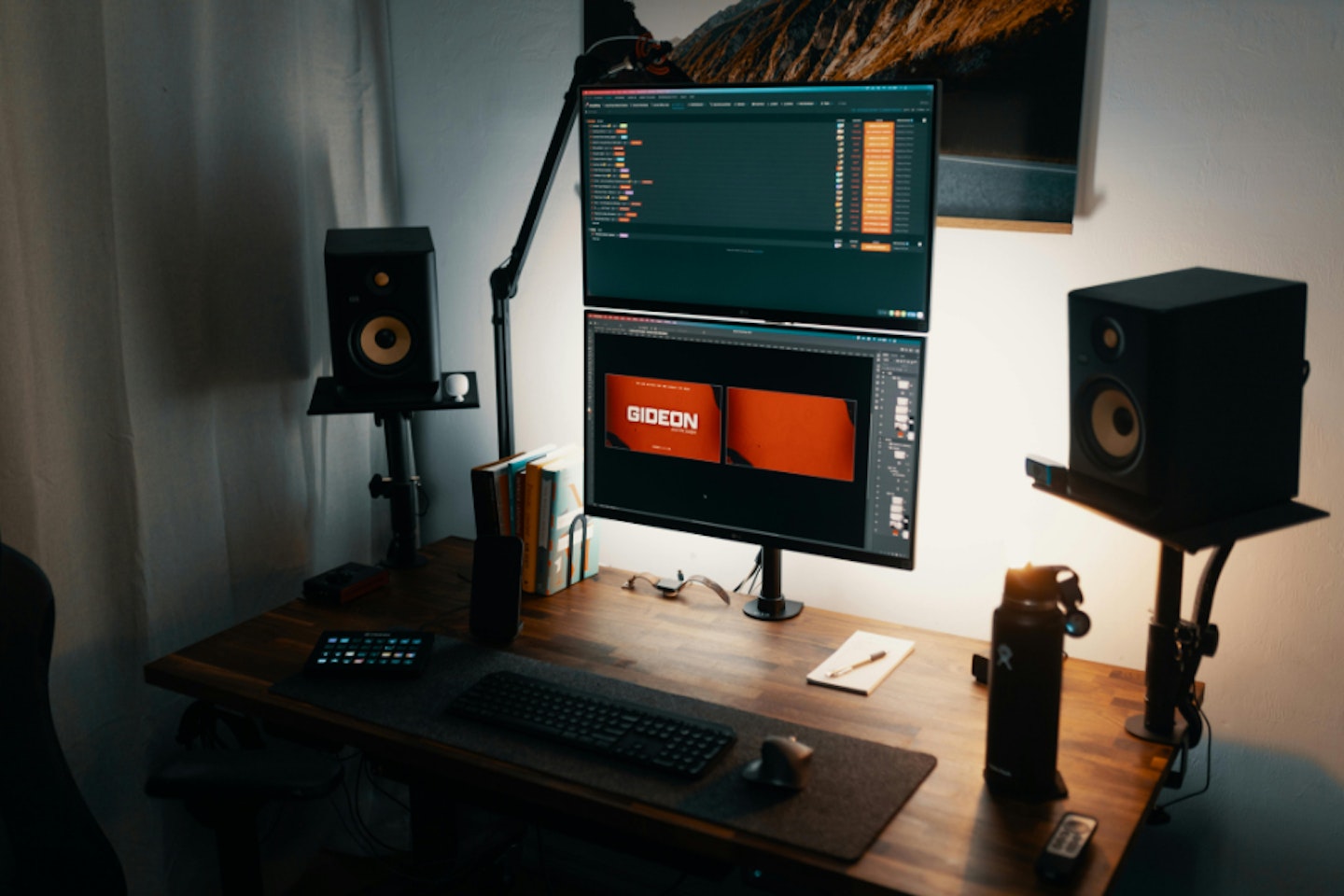
Key terms you should know:
Resolution:
Resolution refers to the number of pixels a screen has at a single time, resulting in a better-quality image. You might recognise certain acronyms used around resolution but not understand what they mean, so here are some popular choices:
• Full HD: Full HD (High Definition) refers to a pixel resolution of 1920 x 1080p. This is the new modern standard, although there are cheaper HD monitors available with a 1280 x 720p resolution.
• Quad HD: Quad HD, or 1440p monitors have a resolution of 2560 x 1440p. These screens, while visually brilliant, aren't the sharpest on the market.
• WQHD: Wide Quad High Definition, or WQHD, are monitors that are particularly wide compared to standard monitors, they have a resolution of 3440 x 1440p to accommodate for this extra size.
• DQHD: Dual Quad HD is typically reserved for incredibly wide monitors, and its resolution is typically 5120×1440p.
• 4K UHD: 4K UHD, or Ultra High Definition are monitors with a 3840 x 2160p refresh rate, and it's named as such because it has a resolution that is four times greater than full HD.
Refresh rate:
Refresh rate measures how quickly a monitor can produce a new image per second, the higher the refresh rate, the smoother and more responsive the monitor is.
If you're wondering how important monitor refresh rate is, it's largely unimpactful for office workers who don't typically need silky-smooth monitors, but for gamers and video editors who need high-powered smoothness, it's incredibly useful.
A typical refresh rate for a monitor is 60Hz, which is great for standard use, even for gaming with its solid smooth performance. For higher performance, however, 120Hz is optimal, but there are monitors with even higher refresh rates available on the market.
Response time:
Response time measures the time taken for an inputted action to be output on the monitor screen, for example, the movement of the mouse or typing on a keyboard. Measured in milliseconds, a typical monitor has a response time of around 4-5ms.
OLED monitors have exceptionally brilliant response times, however, many monitors on our roundup with response times of 0.03ms, which is incredibly fast, and perfect for gaming.
• HDR: High Dynamic Range, or HDR, is a post-processing software that's used to brighten the brightest colours, and darken and the darkest tones. This boosts contrast and visually enhances picture beyond what a screen is already capable of.
There are a number of versions of HDR to explore, find a great one ensures you're getting the best contrast possible:
• HDR400: HDR400 is called as such because it increases the brightness of a screen to 400 nits, which is solid for an OLED monitor, but isn't exceptional. What's more, it also improves colour and contrast to create excellent OLED infinite contrast.
• HDR10: A standard amongst modern high-end monitors, HDR10 brings fantastic colour and brightness to OLEDs which isn't always possible due to technical limitations. HDR10 aims to increase overall brightness to 1,000 nits, which is an impressive technical feat, especially with OLED monitors.
• HDR10+: HDR10+ is an even more advanced version of HDR10, aiming to reach a peak brightness of a whopping 4,000 nits. This means that contrast is truly incredible, any monitor with this technology is worth exploring.
OLED: Organic Light Emitting Diode is a type of screen technology that, unlike typical screens, doesn't utilise a backlight. The result of this is what is known as infinite contrast, meaning that black tones are truly black, they cannot be darker. OLED monitors are capable of this because each diode can be switched off, so when you're looking at black tones, they are truly black, without any interference from a backlight.
QD-OLED: QD-OLED monitor is a relatively new and upcoming technology in the monitor market, and it's changed the OLED monitor market entirely. QD refers to Quantum Dot technology, which is commonly found in QLED monitors and televisions.
Quantum dot technology brings a huge amount of colour to OLED technology, which is otherwise impossible on a standard OLED. Combining the technology, you get the brightness, vibrancy and colour range of QLED and the deep, high-contrast colours of OLED, so you get the best of both worlds.
Colour gamut:
A colour gamut is a range of colours that a monitor is capable of reproducing. It's a wide range of predetermined colours that acts as a measure for all monitors, so you can see just how good your screen is.
While there are a range of colour spaces to look at, we've particularly looked at DCI-P3 in this article.
• DCI-P3: Digital Cinema Initiative P3 has been a standard used for motion pictures since 2005, and it's still a great measure for colour range, with a 26 per cent larger colour range than sRGB has. Typical OLED monitors have a high percentage of colour reproduction, with our picks hitting upwards of 98 per cent of the colour gamut.
Who are OLED monitors for?
OLED monitors are a brilliant monitor technology that utilises its ultra-thin screen and lack of backlight to produce brilliant response times and unbeatable contrast, but who is this technology really for?
While there isn't a definitive answer to this, OLED monitors can be used by anyone, but for some, the difference between a standard monitor and an OLED monitor is going to be revolutionary.
Gamers in particular are set to benefit from the sheer power and performance an OLED monitor can handle. With refresh rates reaching upwards of a scorching 360Hz, faster than a monitor has any right to be, along with 0.03ms response times, gaming has never felt better.
As for non-gamers, video editors in search of high refresh rates are also likely to find plenty of use in OLED monitors, as editing at a high refresh rate is incredibly useful.
For those intrigued by programming, you can use high-refresh rate monitors to test and run simulations, giving you smoother performance than you'd ever find at 60Hz.
What are the drawbacks of OLED monitors?
Of course, every technology has its weaknesses, and OLED monitors aren't without them. While brilliant, one of the largest downsides of OLED technology is its high vulnerability to screen burn. Occurring when you leave your OLED monitor on idle for a little too long, OLED monitors have the potential to have images permanently burned upon them, this leaves an awful spectre of whatever you'd left on the screen permanently, rendering the monitor useless.
As for other weaknesses, OLED monitors aren't typically as bright as QLED monitors, which tend to have peak brightness well over 1,000 nits. OLED monitors however, especially cheaper ones, usually clock in around 250 nits, which is about standard for LED monitors. As a result, you're getting weaker colour range and less vibrancy, but for most OLED monitors, there have been developing technological workarounds that amp up the brightness to new levels.
FAQs: your questions answered
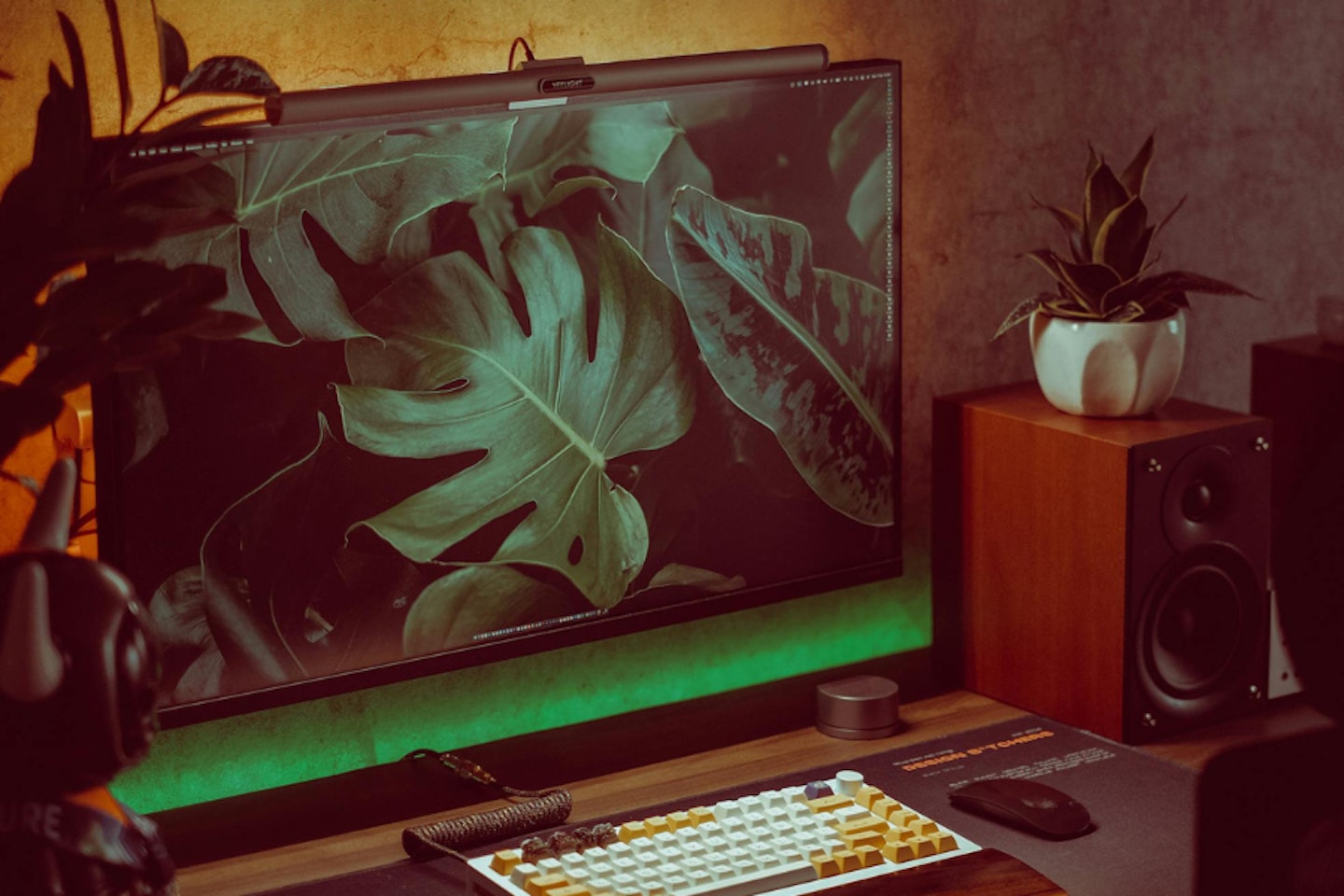
What is the price range for OLED monitors?
OLED monitors are, while brilliant, incredibly expensive compared to standard monitors on the market right now. For the cheapest monitor, you're quite easily going to spend around £700-800, and there are no real exceptions to this price.
For the best OLED monitors right now, they're upwards of £1,400, about the price of a television, so ensure you've got deep pockets and enough cash to cover your PC build.
Are OLED monitors good for eye health?
OLED technology is ideal for great contrast and vibrancy, but with heightened brightness comes higher levels of Blue Light, leading to eyes that are more stressed than typical.
Enabling eye protection modes on OLED monitors should certainly be considered if you're prone to headaches from brighter screens, most modern OLED monitors have this preset available.
Are OLED monitors eco-friendly?
OLED monitors are manufactured from safe, non-toxic substances using organic components to create individual diodes. This safer manufacturing process ensures that OLED screens can be carefully recycled after they're no longer useable.
OLED monitors also don't utilise an energy-hungry backlight to power up, making them more energy efficient in general, especially when compared to QLED technology. Of course, with brighter models, they become more power-hungry and therefore less eco-friendly.
How do I get the best picture from my OLED monitor?
Getting the best picture out of your brand-new OLED monitor can be something of a challenge, but with the right advice, you can calibrate your monitor with ease.
You can adjust the brightness, contrast and warmth using the buttons on your OLED monitor, but we'd advise against it in exchange for something a little easier to customise.
Windows has plenty of options for excellent colour calibration, without altering the settings of the monitor itself.
By searching Calibration, and selecting Colour Calibration, follow the onscreen instructions for total picture optimisation.
Try to avoid built-in monitor settings, as these look particularly poor compared to default options, and are rarely optimised well.
Ryan Houghton is a commercial content writer for What’s The Best, known best for his expertise in gaming, with a particular soft spot for PC gaming, audio tech, televisions and smartphones.
Diligently writing for What’s The Best for almost two years, there are very few tech products Ryan hasn’t had his hands on to review; televisions, headphones, folding phones and even LEGO, if it’s nerdy, he’ll be there.
His well-versed history as one of the resident techies at What’s The Best has kept him keen to uncover the very best deals, savings and offers for those in need of a cracking deal to upgrade their setup.
In his downtime, Ryan most likely has his nose buried in a fantasy book, or his eyes glued to a screen whilst playing a tough-as-nails Soulslike or leisurely RPG, indulging in most forms of escapism where possible.
Subscribe to the What’s The Best Newsletter to keep up to date with more of the latest reviews and recommendations from the rest of the What’s The Best team.
